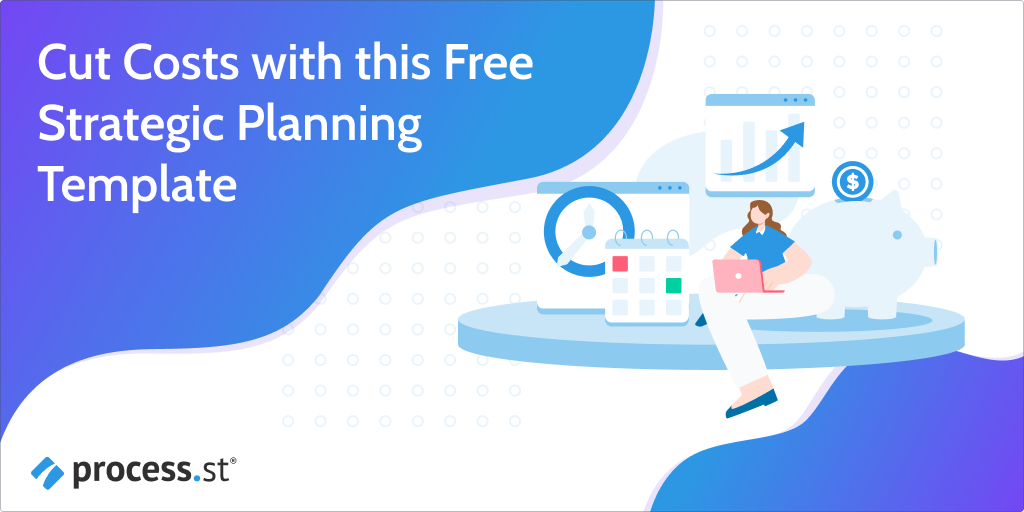Elite Business Ventures (EBV) was a high-volume compliance and safety solutions provider with over 65 employees and millions in annual revenue. Known for brands like OSHA4Less, EBV served tens of thousands of customers in regulated industries across the United States.
All posts in Business Strategy
Christian Marketing Case Study: 54% Higher Email Engagement & 150% More Event Attendees
At Teach 4 the Heart, a fast-growing professional development provider for Christian educators, scaling operations meant finding a better way to manage daily tasks, email campaigns, and large-scale events like the Rise Up Summit.
The team was outgrowing Trello. Marketing performance had plateaued. And coordinating external sponsors and team members felt increasingly chaotic. Continue Reading
Cut Costs With This Free Strategic Planning Template
In the book The Balanced Scorecard, by David Norton and Robert Kaplan, it is noted that 90% of organizations fail to execute their pre-set strategy.
This is a concerning statistic when you consider that, for a majority of companies considered successful, an emphasis is placed on having formal and pre-established systems to inform, manage, and meet their strategic obligations.
In this sense, can we not infer executing business strategy = business success?
To bridge this gap between strategic ambition and business performance, Process Street has created a Strategic Planning Template, which you can use – for free – right away!
By executing the steps given in this template you will not only develop good strategy, but the delivery of this strategy will also prove successful.
Click here to access our free Strategic Planning Template!
But to accommodate this template, you need to have a solid understanding of strategic planning itself.
In this article, I’ll discuss what strategic planning is, the different strategic planning models – with an emphasis on the Cascade Strategic Planning Model -, why strategic planning is important, and more.
Click on the links below to read through:
- What is strategic planning?
- Strategic management vs strategic planning: What is the difference between these 2 terms?
- Why strategic planning is important
- What are strategic planning models?
- Use Process Street’s strategy planning template to document your strategic plan
- Strategic plan outline: Framework, structure, and governance
- Other strategic planning models and how you can implement them via Process Street
Let’s jump straight to it!
Continue Reading
Email Workflows: Best Practices and Examples that Turn Leads into Sales
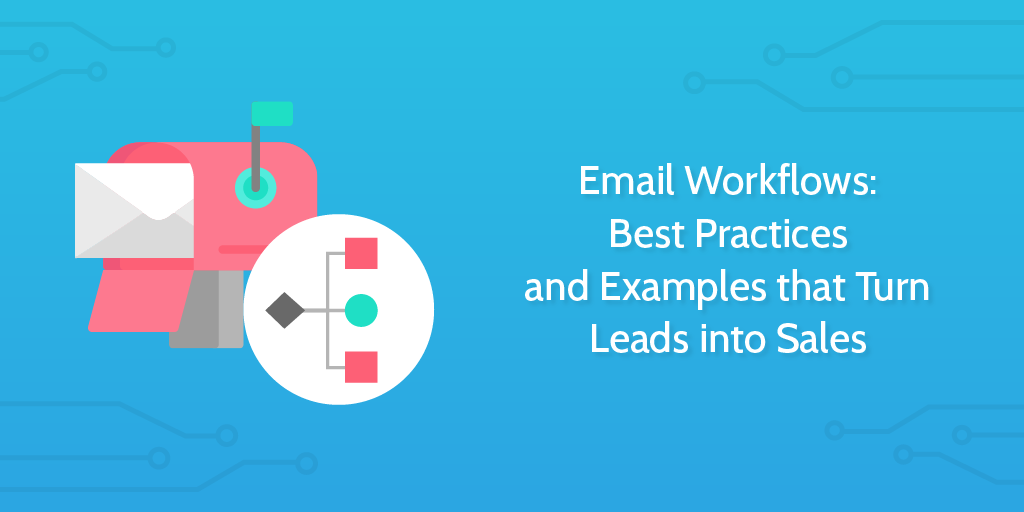
Alright, so your most recent marketing campaign has generated a ton of interest among your target consumers.
You’ve seen a huge spike in web traffic, mailing list subscribers, and your social media following.
But, despite all this, you still aren’t seeing much of an increase in the area that really matters:
It’s a disheartening feeling, for sure – especially considering how high your hopes were after seeing such a huge spike in traffic and engagement.
If it’s any consolation, you’re not alone.
According to data collected by HubSpot, 79% of marketing qualified leads never end up converting. In other words, nearly four of every five people who show a genuine interest in a given brand end up walking away without making a purchase from said company.
Now, one of the main reasons this number is so high is because many companies implement sub-par strategies for nurturing these qualified leads – if they implement lead-nurturing strategies at all.
On the bright side of things, this means that if you focus heavily on nurturing your qualified leads, you’ll almost definitely be doing more than your competitors are in terms of providing value to your target customers.
In this article, we’re going to focus on how to use email workflows as part of your marketing strategy to nurture leads and increase their probability of converting into paying customers.
Before we get into the best practices for creating automated email workflows, we first need to explain exactly what email workflows are, and how using them can benefit your company.
Let’s get started.
The Top 4 Levers That Drive 80% of Value Capture in Successful Acquisitions

Value capture is, in essence, the end-all, be-all of a company’s life-cycle. Yes, you likely have other motivations for starting your company, but without capturing any value, your company will have a very short lifespan.
When it comes to acquisitions, if you don’t have a good strategy to drive value capture, you’re not only wasting your time, but hobbling your future potential in the process. If you look at some notable examples like Daimler Chrysler and Sprint/Nextel, it’s pretty clear that a bad deal will stick to you for a long time.
You might even end up as a cautionary tale for future M&A executives. No one wants that. Aspire to be the Apple of acquisitions. You can do that by focusing on four distinct levers that drive 80% of value capture.
Four things. They’re not even difficult things.
So in this Process Street post, I give you the rundown of the four levers you need to prioritize during your acquisition, and exactly why they make such an impact:
- Pursuing the ever-elusive value capture
- Lever #1: Utilize your functional teams early in the acquisition process
- Lever #2: Complete your commercial & operational due diligence before closing
- Lever #3: Assess the revenue & cost synergy potential of the deal
- Lever #4: Develop a realistic strategic operating model design
Let’s get to it!
Continue Reading
How to Reduce Defects in Business by 20% Using the Juran Trilogy

Joseph Juran, the Architect of Quality, paved the way for the active pursuit of quality in Business with the Juran Trilogy.
The Juran Trilogy redefined quality management; reducing chronic defects and the costs associated below a 20% industry expectation.
The Juran Trilogy has been shown to give benefits across multiple parameters, increasing productivity, reducing cycle-times, improving human safety, and reducing product failure rates – with a 80% reduction in some cases.
For us as Process Street, the Juran Trilogy is one of our favorite tools for improving business operations. It’s a straightforward methodology that brings results.
Learn how to apply the Juran Trilogy for your business, and improve the quality of operations. Click on the relevant subheader below to jump to your section of choice, alternatively scroll down to read all we have to say:
- What is the Juran Trilogy?
- Using the Juran Trilogy for quality control: Quality planning, control and improvement
- Implementing the Juran Trilogy using Process Street
- Juran Trilogy examples: Quality improvement in the real world
4 Customer Success Metrics to Inform Your Product-Led (Expansion) Growth Strategy
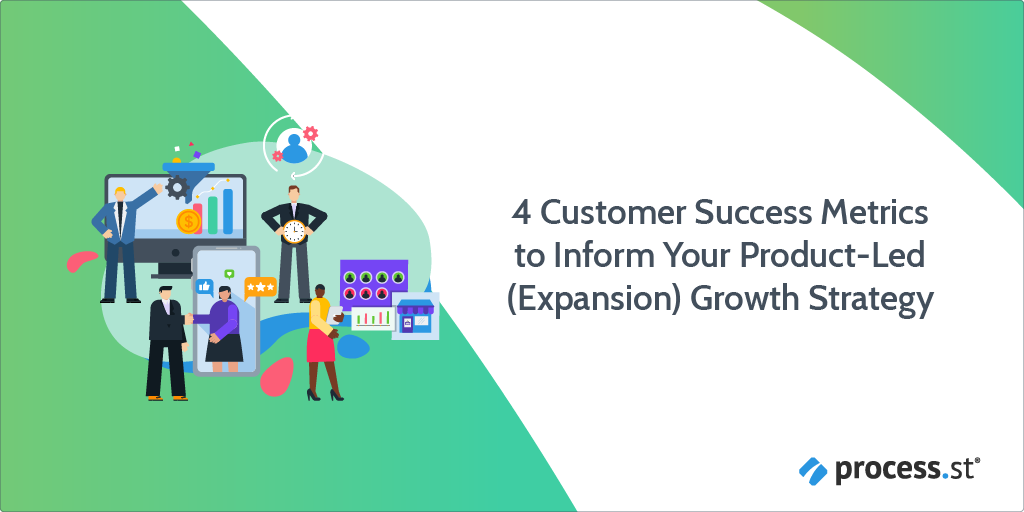
Reports indicate steady growth in CS functionality since 2013. And since the COVID-19 pandemic, this growth has substantially increased. In 2021, 76% of surveyed CS professionals said they had a team consisting of more than 10 people. With this expansion comes the development of CS as a discipline.
Welcome to the customer success era.
In this CS era, business focus is on customer experience. And when it comes to your product, this means to show and let your customer try your offering. That is, be product-oriented to drive product-led expansion.
In this Process Street article, we identify the 4 key customer success metrics you need to develop your CS functionality. These metrics will inform your product-led growth strategy by measuring acquisition, adoption, retention, and expansion. This article is structured as follows:
- Understanding product-led growth and its benefits
- 4 key product-led customer success metrics
- 3 bonus tips to rocket your expansion revenue
Let’s jump to it!
Continue Reading
The 4 Workplace Personality Types Your Business Needs to Succeed

Mike Nemeroff is the co-founder and CEO of RushOrderTees. An entrepreneur from an early age, Mike and his siblings started a small screen printing business in their garage as teens and RushOrderTees was born. Under Mike’s leadership, the business has grown into the $75 million dollar ecommerce company that it is today with more than 225 employees.
Everyone wants to have a successful business, but getting there can be a challenge. Your team can make or break a project. For that reason, you need to surround yourself with individuals who can provide an added boost to your production levels.
Who should you choose for your team?
It takes all personality types to successfully manage a team and pull them towards your objectives. You need to find the right people who can work together and motivate others to meet your business needs.
The best types of team members give your business the right momentum and direction while providing open communication. Running a business can be difficult, but finding the most qualified people to fill those vital roles is even more complicated. You need to choose individuals who are willing to support, guide, and even challenge your ideas.
This Process Street post will walk through the four best personalities that can help run a successful organization:
- Workplace personality #1: The Leader
- Workplace personality #2: The Task Manager
- Workplace personality #3: The Abstract Thinker
- Workplace personality #4: The Champion
Let’s dive in!
Continue Reading
5 Tips to Make Your Customer Success Vectors Actual Vectors (KSIs Not KPIs)
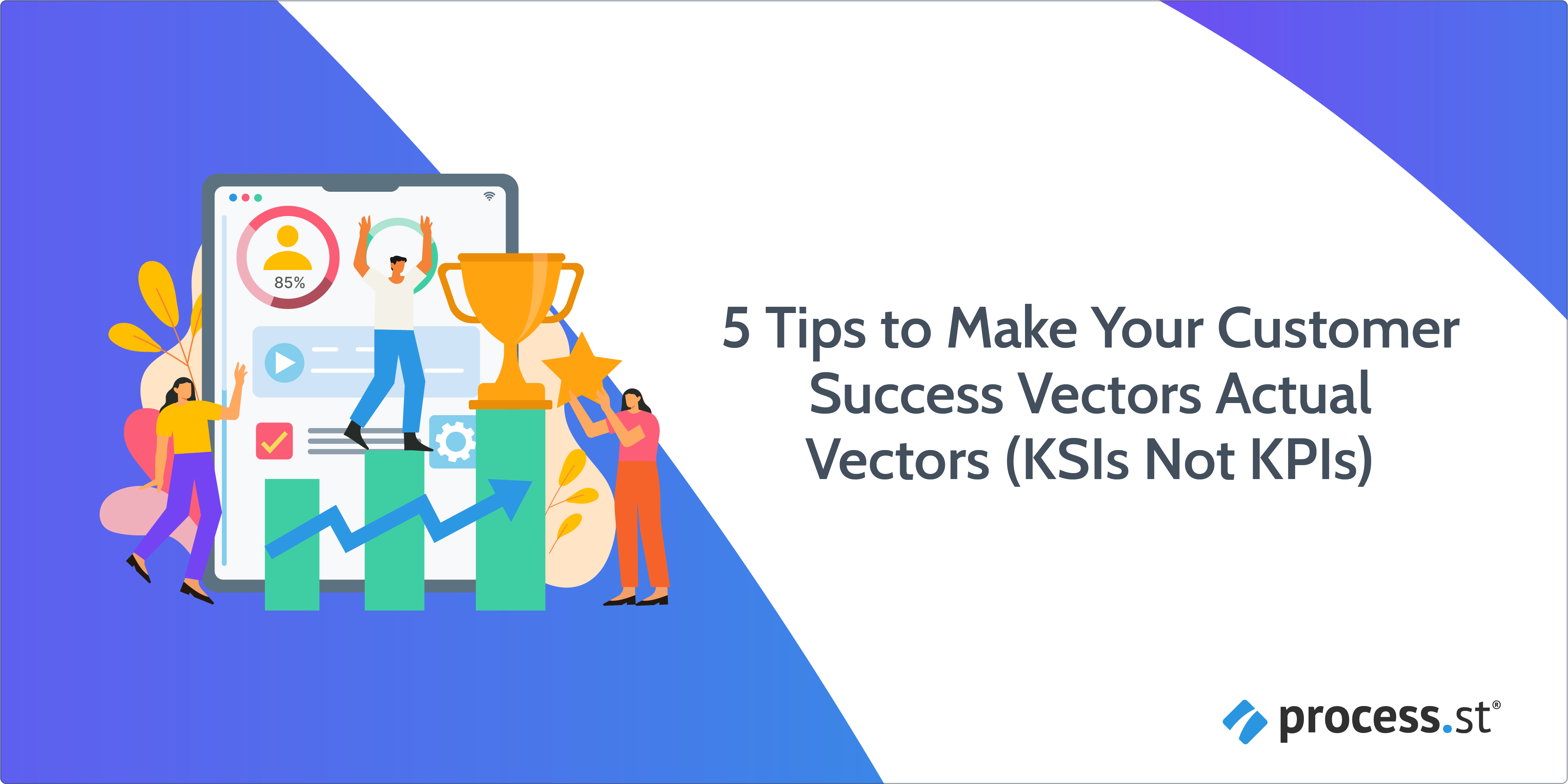
79% of marketers state customer experience strategies need to focus on customer retention. Yet, according to McKinsey and Company, there’s too much focus on churn reduction with a lack of consideration on what the customer wants.
When thinking about common metrics used in customer success – e.g. customer health scores – these are in-the-moment snapshots designed to communicate the likelihood of churn. They do not consider what it is the customer wants to achieve and whether they are on track to achieve this. To do this, you need customer success vectors.
A customer success vector gives the here-to-here journey a customer has with you, detailing where they are at today, where they will be tomorrow, and where they want to go.
In this Process Street article, I’ll explain what a customer success vector is, and why you need to supplement your customer experience metrics with vector measurements. You’ll learn how to ensure your customer success vectors are actual vectors with my 5 top tips. By the end of this article, you’ll be able to leverage success vector results to drive growth from the customer’s perspective, and consequently, from the perspective of your bottom line.
- Customer health score: Moving from a customer success KPI to a KSI
- Customer success vectors describe the customer’s maturity and where they’re heading
- 5 tips to ensure your customer success vectors are actual vectors
Let’s jump to it!
Continue Reading
Should You Be More Product Oriented? Practical Advice From Wes Bush
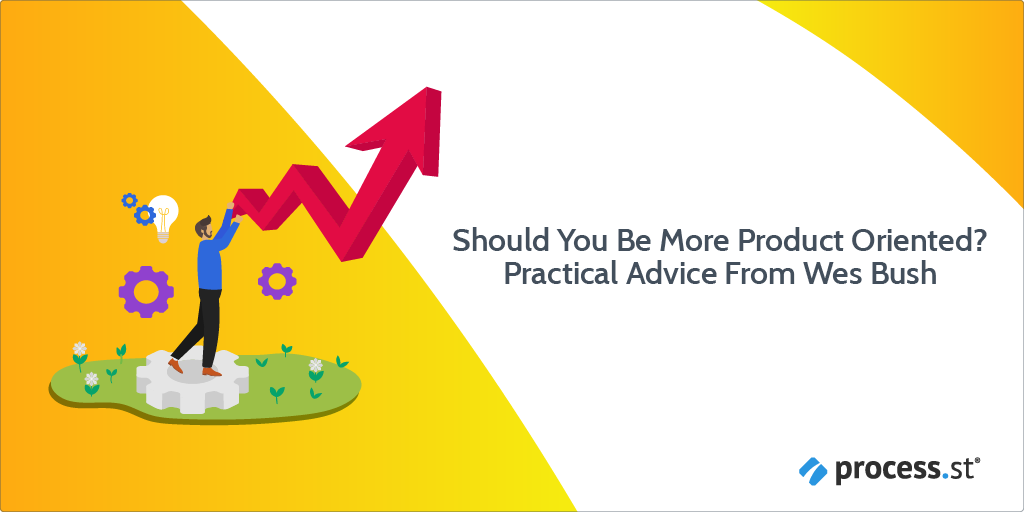
When I was still teaching, the three main points of advice I found myself repeating were:
- Take your time.
- Keep it simple.
- Don’t bite off more than you can chew.
As it turns out, those three statements apply to most things in life – including business. Especially business.
I know. We’ve been in an era of calculated risk, mainlining entrepreneurial spirit, and the pervasive (-ly annoying) go-big-or-go-home philosophy for so long that “going above and beyond” isn’t even status quo; it’s bare minimum requirements.
Hear me out.
No matter what else you’re doing with your company, you have to take care of your customers. You have to understand them: what they want, what they need, and what they will need down the road.
That understanding of your customer and their relationship with your product is a crucial aspect of becoming a successful product-oriented business.
So you’ve read our previous post on product-led growth (PLG) and now know all the nuts and bolts of a PLG go-to-market strategy. It’s a super-exciting concept and exactly the direction you’ve wanted to take your company in.
But. (There’s always a “but.”)
Your business – the entire customer lifecycle every user of your product goes through – revolves around the traditional sales-led approach of painstakingly coaxing every customer through each step of the sales cycle from demo to trial to paying user.
You can’t go in tomorrow morning, clear out all your established processes, and tell your sales team: Right, we’re totally changing everything right this second. Even if your sales team doesn’t laugh you out of the office, it’s not going to work.
So how do you navigate that transition and maintain your success?
I didn’t know the answer to that, so for this Process Street post, I went straight to the horse’s mouth ( ) and asked PLG champ, author, and founder Wes Bush about how to make PLG work and become a successful, product-oriented company.
- Wes Bush, PLG Champion
- Product-led growth: Where it all began
- The end-user era: Software for the people
- PLG: Simplicity is the ultimate sophistication
- What goes up, must come down
- Essential metrics to measure product-oriented success
- A final word on the product-oriented evolution
Let’s get started!
Continue Reading






